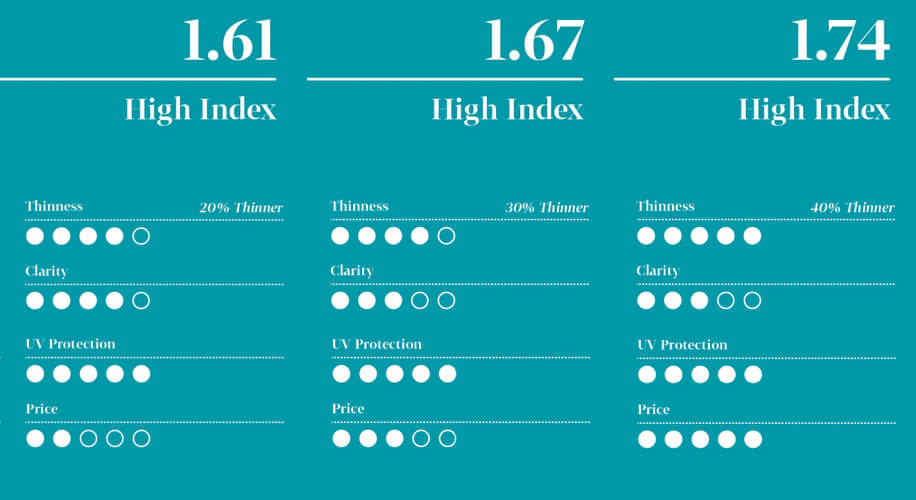All About High Index Lenses
When it comes to eyewear, there’s more to consider than just style and design. The type of lens you choose can have a big impact on your comfort, vision clarity, and overall experience. One type of lens that often gets overlooked is the high index lens. But what exactly is a high index lens? How does it differ from regular lenses, and who should consider them? Let’s dive in and explore all there is to know about high index lenses.

Understanding High Index Lenses
A high index lens, in simple terms, is a lens made of a type of plastic that refracts light more effectively than common lens materials such as CR-39, also known as 1.50, or polycarbonate. This means that less material is needed to correct vision, resulting in thinner, lighter lenses that are more comfortable to wear, especially for those with stronger prescriptions. These lenses are a perfect match for trendy thin frame glasses or designer men’s glasses.
Benefits of High Index Lenses
- Lightweight: High index lenses are much lighter than regular lenses, making them more comfortable to wear, especially for long periods.
- Slim Profile: Because less material is needed, these lenses are thinner, meaning they won’t bulge out of the frame. This is particularly beneficial for those with strong prescriptions.
- Aesthetically Pleasing: The thin, sleek look of high index lenses is more attractive and can fit into more stylish frames like colored glasses or aviator sunglasses for men.
Who Should Consider High Index Lenses?
If you have a relatively low prescription, standard lenses might be sufficient for your needs. However, if your prescription is strong (especially if it’s above +/- 4.00), you might find that traditional lenses are thick and heavy. In this case, high index lenses can be a game-changer, providing you with a more comfortable, lightweight, and attractive option.
Choosing the Right High Index Lenses
High index lenses come in different indexes, including 1.61, 1.67, and 1.74, with the higher number indicating a thinner and lighter lens. Your eye care provider can guide you to the right index based on your prescription strength.
It’s also worth noting that high index lenses can be incorporated into various types of eyewear, from non-prescription glasses to progressive reading glasses and even polarized sunglasses for men.
At Zenni Optical, we offer a wide range of high-quality eyewear with high index lens options. Explore our collection to find the perfect pair for you.
About the Author: Dr. Steven Lee
Dr. Steven Lee is a visionary leader in the eye care and telemedicine sectors and has built a remarkable career by combining his formal training in eye care, engineering expertise, and a passion for innovation. Dr. Lee serves as Zenni’s the Head of Optical Product.


 Canada
Canada